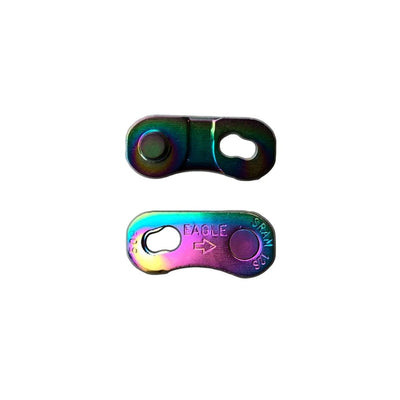Common Reasons Why Bike Chains Break
Wear and Stretching
A heavily used chain will stretch out over time, and the links will loosen. This stretching makes the chain more susceptible to metal fatigue. Wear on the chainrings and the rear gear cassette, a loose chain, and a sudden bad shift creates the perfect mix for a broken chain.
Hard Shifting With a Heavy Load
Shifting under ordinary circumstances creates a lot of tension on the chain. Shifting under a heavy load, such as when you are pumping hard on a climb, can cause extra stress on the chain and cause it to snap. Even ordinary pedaling while shifting can put stress on a chain. Shift before a climb and back off pedaling when you shift to avoid snapping your chain.
Damaged Derailleur or Bent Cogs
If the derailleur isn’t properly installed or maintained, it can malfunction and stretch the chain. The chain may not disengage properly, and it will twist between the two cogs. Bent cogs can fail to take up the chain and may cause twisting and jams, which, under the stress of pedaling, can make the bike chain break.
Dirt and Debris
Mountain and cyclocross or gravel bikes take a beating from trails. While mountain bikers may try to avoid mud to spare the trail and their bikes from damage, cross riders forge through mud and gravel. Even full suspension mountain bikes can kick up pebbles, rocks, and chunks of dirt that gunk up the chain. Most cyclists are meticulous about cleaning and lubricating their bikes, but if the bike was ridden hard and put away muddy, there’s a risk that the chain links will weaken as debris works its way in and around them.
The impact from rocks, chunks of dirt, or bad falls are other reasons a bike chain can break. These can damage the cassette, derailleurs, and, in turn, the chain. Inspect your bike before every ride for any dents, misalignment, sagging and loose pins, or stuck pebbles you missed last time. Tighten the chain by removing a link or two and reattaching the chain ends. And remember to ease off when you shift to preserve the life of your chain.
If you’re new to mountain biking, you might want to check out our hardtail mountain bikes for sale. These bikes stay grounded in the rear, giving novice riders a better feel for the terrain. Knowing how bumpy a trail can be is a good way to avoid hard shifting, especially when your bike chain is already under stress from the heavy load of pedaling uphill and over bumps.



Leave a comment